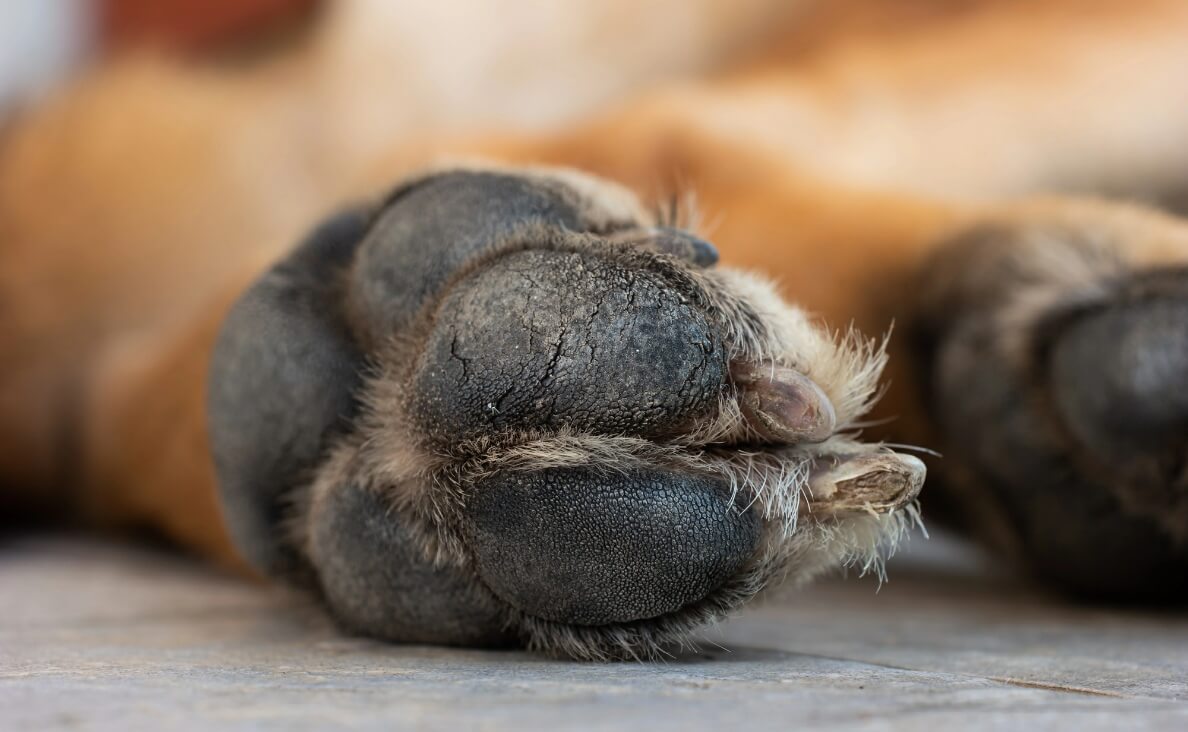
Your dog’s paws do more than just help them walk and run—they provide stability, balance, and protection. Yet, many dog parents overlook dog paw care, only noticing problems when their pup starts limping or licking their paws excessively. Healthy paws are essential for your dog’s mobility, comfort, and overall well-being.
In this guide, we’ll cover everything you need to know about dog paw care, including common paw problems, daily maintenance, and seasonal tips to keep those paws happy and healthy year-round.
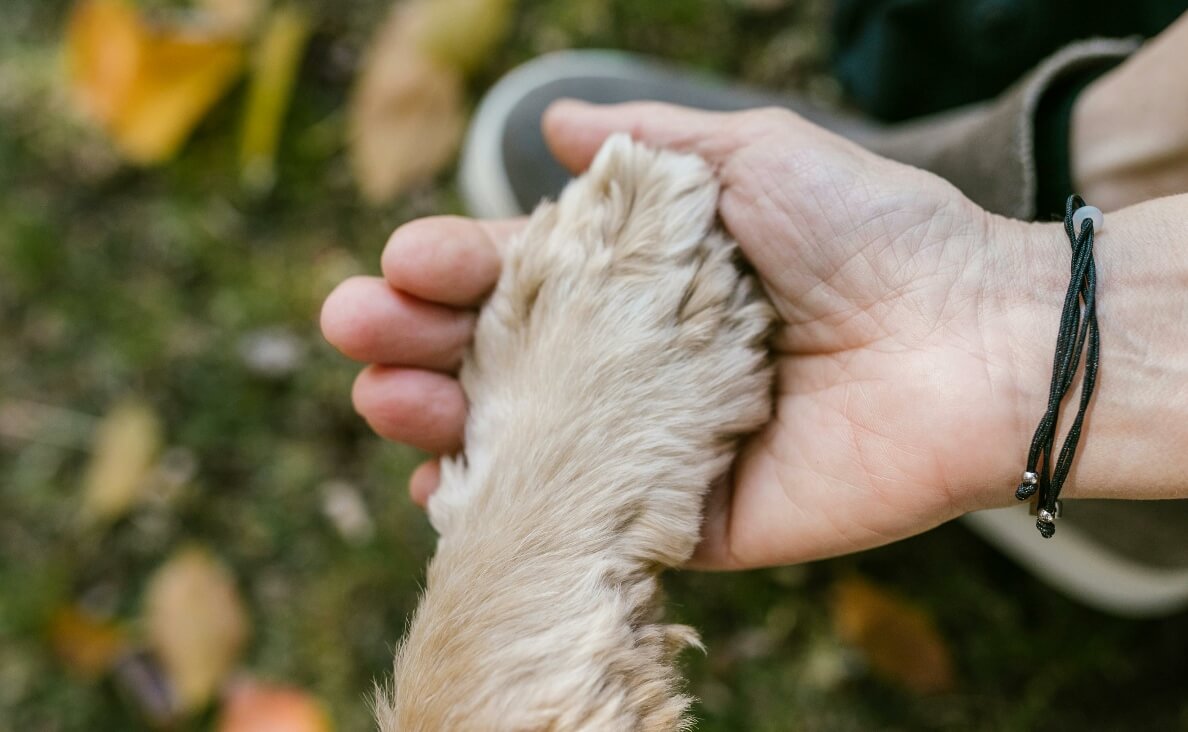
Why Dog Paw Care is Important
A dog’s paws are tough yet sensitive. They endure hot sidewalks, rough terrain, and cold weather, all of which can lead to dryness, injuries, and discomfort. Regular dog paw care can:
• Prevent infections and injuries – Small cuts or cracks can lead to painful infections if not treated.
• Reduce mobility issues – Healthy paws keep your dog moving comfortably without limping.
• Improve comfort – Dry or irritated paws can make even short walks unpleasant.
• Promote long-term health – Keeping paw pads, nails, and in-between areas clean helps prevent serious health issues.
Just as we care for our feet and hands, our dogs need the same level of attention for their paws!
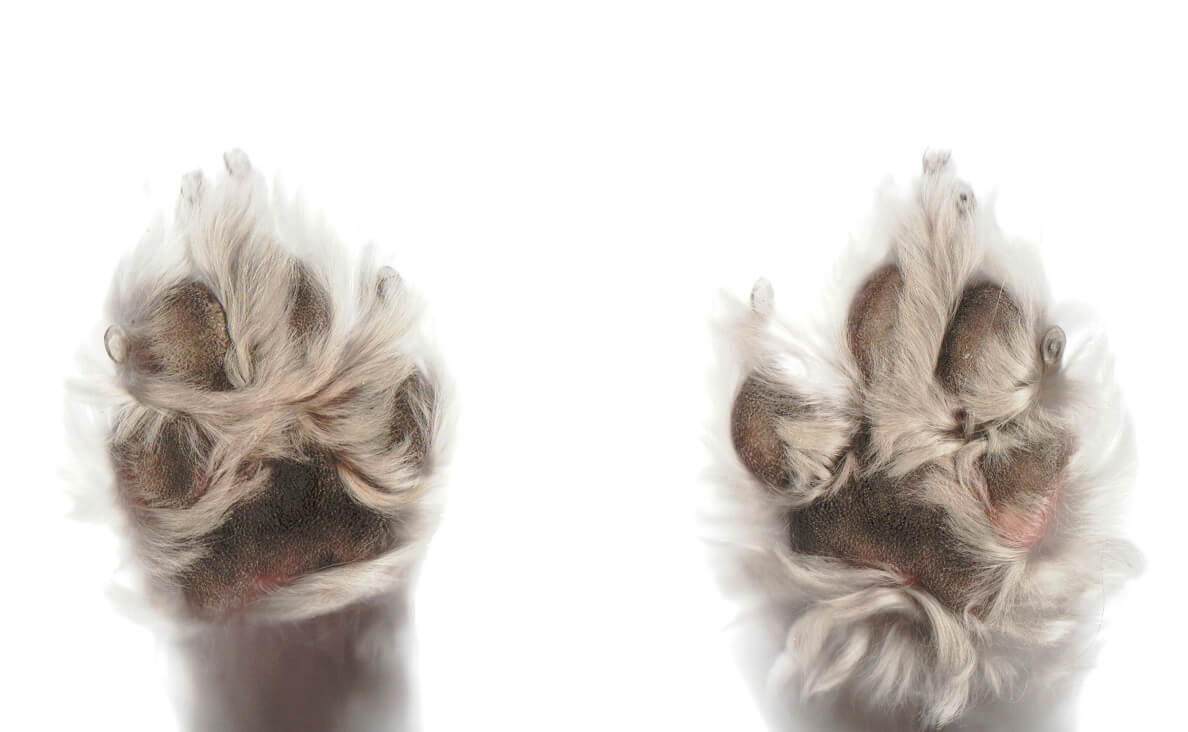
Common Dog Paw Problems to Watch For
Even with regular care, your pup may experience paw-related issues. Here are some common problems and how to handle them:
🐾 Cracked or Dry Paw Pads
Causes: Walking on hot pavement, exposure to ice-melting chemicals, dehydration, or lack of moisture.
Symptoms: Rough, peeling, or bleeding paw pads.
Treatment: Apply a dog-safe paw balm to moisturize and protect the pads. Keep your dog off hot pavement and provide plenty of fresh water.
Related: What To Do If Your Dog Has Cracked Paw Pads
🐾 Cuts, Scrapes, or Burns
Causes: Rough terrain, stepping on sharp objects, walking on hot asphalt.
Symptoms: Limping, excessive licking, visible wounds.
Treatment: Clean minor cuts with warm water and a pet-safe antiseptic. If there’s swelling, bleeding, or signs of infection, consult a vet immediately.
🐾 Paw Pad Infections or Fungus
Causes: Wet environments, dirty paws, excessive licking.
Symptoms: Redness, swelling, foul odor, or discharge.
Treatment: Keep paws clean and dry. If infection persists, your vet may recommend an antifungal or antibacterial treatment.
🐾 Allergies and Irritations
Causes: Grass, pollen, chemicals, food allergies.
Symptoms: Red, itchy, inflamed paws, excessive chewing or licking.
Treatment: Wipe your dog’s paws after walks to remove allergens. If symptoms persist, consult a vet for allergy testing.
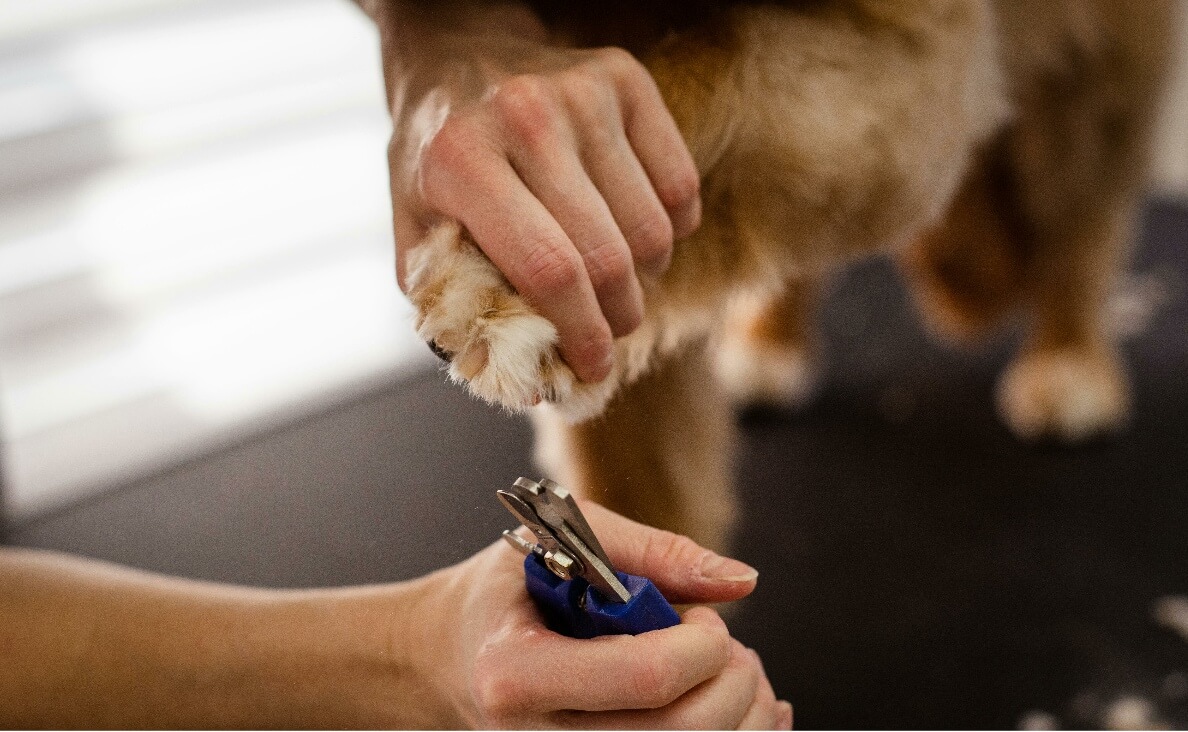
Essential Dog Paw Care Routine
A consistent routine can prevent most paw problems and keep your dog’s paws in top shape. Follow these simple steps for daily and weekly paw maintenance:
Regular Inspections
Check your dog’s paws daily for cuts, cracks, swelling, or lodged debris. Early detection prevents minor issues from becoming serious.
Moisturizing the Paw Pads
Just like our skin, paw pads can become dry and cracked. Use a natural paw balm (made with shea butter or coconut oil) to keep them soft and supple.
Trimming Nails and Fur Between Pads
Long nails can alter your dog’s gait, leading to joint pain. Trim nails every 2-4 weeks or whenever you hear clicking on the floor.
• Use dog nail clippers or a grinder.
• Trim the fur between pads to prevent matting and debris buildup.
Cleaning Paws After Walks
Dirt, allergens, and harmful chemicals stick to paws after walks. Wipe them with a damp cloth or paw wipes to remove dirt and potential irritants.
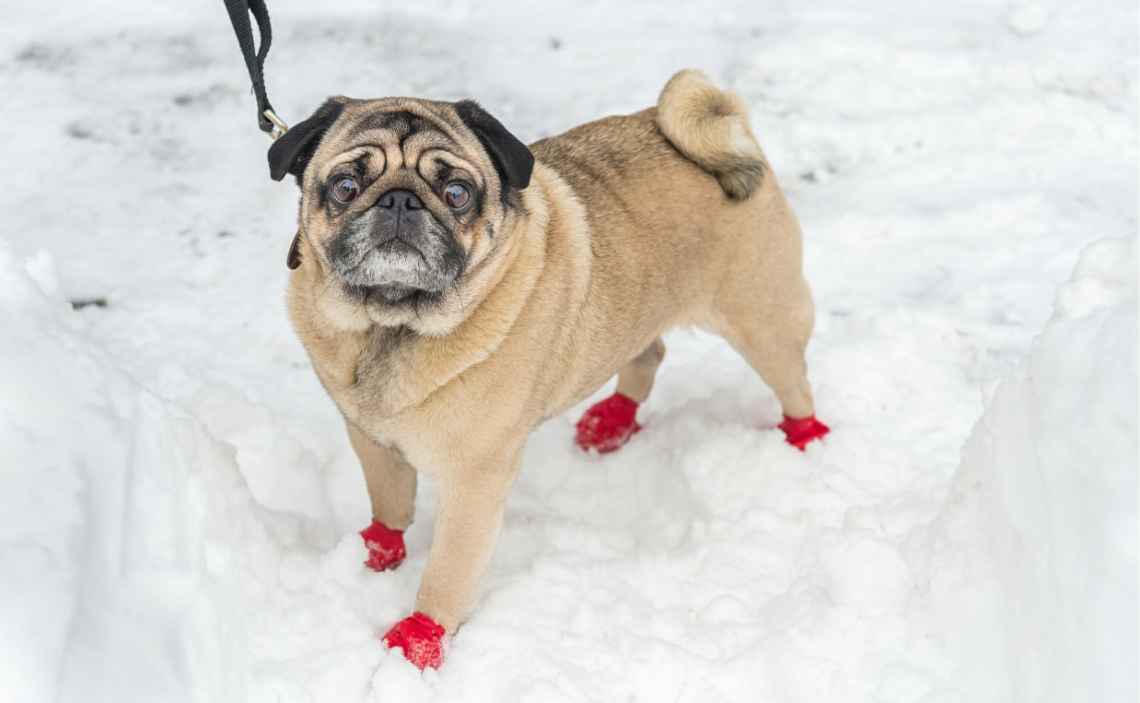
Seasonal Dog Paw Care Tips
Your dog’s paws experience different challenges depending on the season. Here’s how to protect them year-round:
☀️ Summer Paw Protection
• Avoid walking on hot pavement during peak hours. Asphalt can reach over 130°F, causing severe burns.
• Test the ground: Place your hand on the pavement for 7 seconds. If it’s too hot for you, it’s too hot for your pup!
• Use paw wax or booties for extra protection.
• Keep walks shorter and during cooler parts of the day.
❄️ Winter Paw Protection
• Snow, ice, and de-icing chemicals can dry out and crack paw pads.
• Rinse your dog’s paws after walks to remove salt and chemicals.
• Apply paw balm before heading outside to create a protective barrier.
• Use dog booties for extra warmth and traction on icy surfaces.
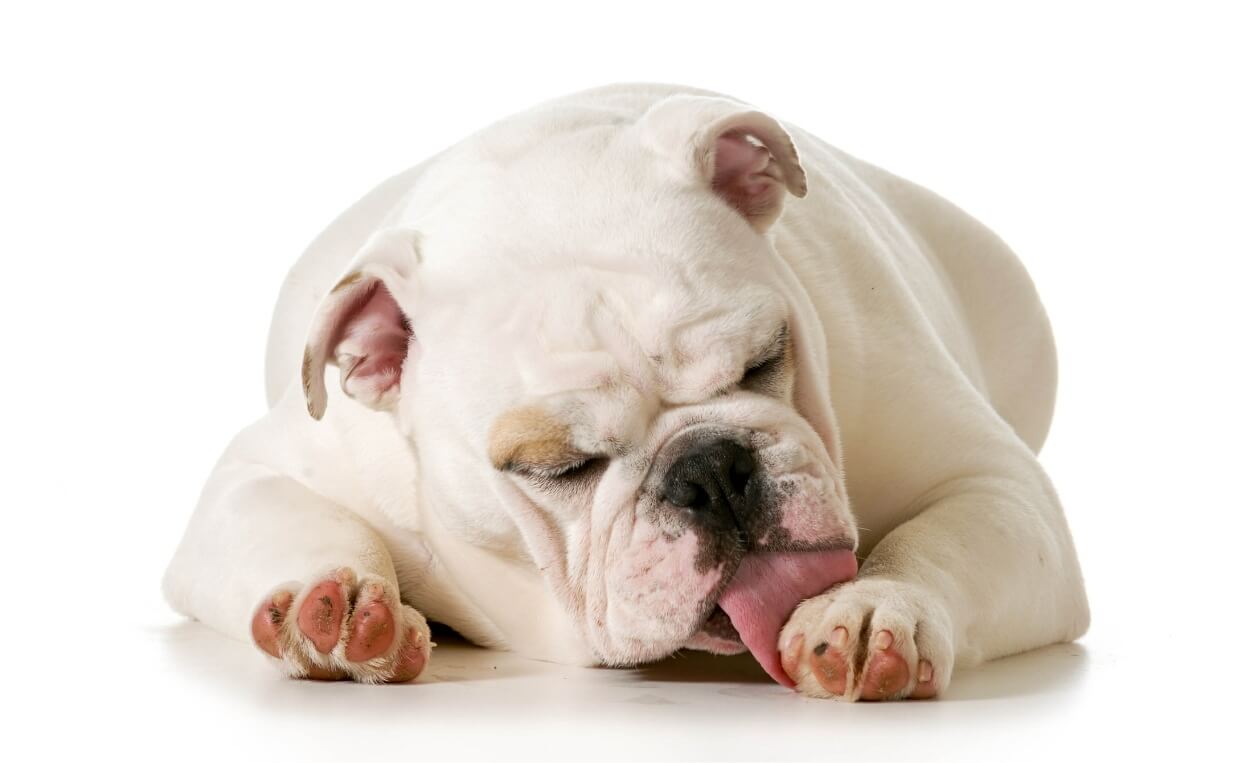
When to See a Vet About Paw Problems
Some paw problems require professional care. Call your vet if you notice:
- Persistent licking or chewing – Could indicate an infection, allergies, or pain.
- Bleeding or swelling – Signs of serious injury or infection.
- Sudden limping – May indicate a splinter, cut, or even joint issues.
- Changes in paw color or texture – Could signal fungal or bacterial infections.
Early intervention helps prevent small problems from turning into major issues.
Keep Your Dog’s Paws in Top Shape with Canine Campus 🐾
Caring for your dog’s paws is simple but essential. By following a consistent dog paw care routine and utilizing professional paw grooming services at Canine Clippers, you can prevent injuries, keep your pup comfortable, and ensure long-term health.
📍 Book your dog’s next paw grooming appointment at Canine Clippers today! Let us help keep those paws happy and healthy. 🐕✨
Caring for your dog’s paws is simple but essential. By following a consistent dog paw care routine, you can prevent injuries, keep your pup comfortable, and ensure long-term health.
From regular inspections to seasonal protection, these small steps make a big difference in your dog’s daily life.
🐾 What’s your favorite way to keep your dog’s paws healthy? Share your tips in the comments below! 👇🐶

 The Most Popular Dog Names in 2017
The Most Popular Dog Names in 2017 Best Dog Brush for Shedding: Top Picks for a Fur-Free Home
Best Dog Brush for Shedding: Top Picks for a Fur-Free Home Top 10 Tips to Calm a Hyperactive Puppy
Top 10 Tips to Calm a Hyperactive Puppy Fish Oil for Dogs: Dosage, Benefits, and Side Effects
Fish Oil for Dogs: Dosage, Benefits, and Side Effects Why Does My Dog Hide Under the Bed? Causes and Solutions
Why Does My Dog Hide Under the Bed? Causes and Solutions






Leave a Reply